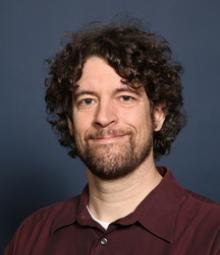Aaron Sarver, PhD
Aaron Sarver is an Assistant Professor in the Institute of Health Informatics. His current work is focused on identifying the molecular rational for cancer formation using genome-wide DNA and RNA sequencing based methods using comparative analyses of human tumors, mouse models and naturally occurring tumors found in dogs.
Cancers are extremely complex and heterogenous, however a common feature appears to be the presence of critical driver events (e.g. genetic mutations in tumor suppressors) that drive tumor formation and progression. Key driver events, such as mutations in TP53, have been identified in many well-studied tumors. However, many human solid tumors do not have clearly identified driver events, even after common oncogenes and tumor suppressors have been systematically examined. We have termed this the“missing driver” problem.
Our approach to solve the “missing driver” problem is to use forward genetic screens for tumor formation in mice to identify genomic locations to systematically and exhaustively investigate within naturally occurring human and canine tumors. Starting with the most recurrent fusions, and then working our way out to lower frequency insertion events we will systematically look for orthologous aberrations in human and canine tumor data. By this logic, SB fusions will tag candidate regions of interest for us. As a first pass, we will analyze RNA-SEQ and tumor normal exome data for transcript level, mutations, RNA-fusions and copy number changes. In addition to using traditional genome-wide bioinformatics methods, because we are focusing on small regions of the genome, this allows us to use methodology not feasible for genome-wide analyses to interrogate candidate driver regions.
We developed Sleeping Beauty (SB) transposon-based insertional mutagenesis models of cancer in mice. Tissue-specific mobilization of SB transposons (T2/Onc) causes stochastic activation of endogenous proto-oncogenes and inactivation of tumor suppressor genes resulting in acceleration of tumor development. These models provide a source of genetically heterogenous tumors with the same initiating mutation useful for identifying cooperating pathways and drivers of specific tumor phenotypes. Because T2/Onc transposons are designed to create fusions with endogenous gene transcripts, deep RNA sequencing of tumors induced by transposon mutagenesis reveals the genes targeted in the major tumor clone. In turn, correlations can be drawn between the alteration of specific genes and changes in tumor gene expression patterns. Thus, an additional goal of our recent research has been to discover novel associations between SB-induced tumor transcriptional phenotypes and specific driver gene alterations (i.e. the tumor genotype).
Education
Research Assistant Professor
